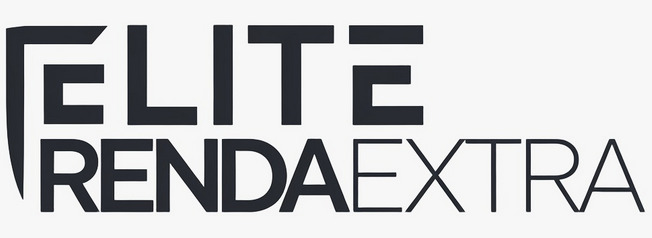Navigating the world of personal finance can sometimes feel complex, especially when you need access to funds for significant expenses or unexpected situations. Personal loans offer a potential solution for many individuals across the United States, providing a lump sum of money that can be repaid over a set period.
Understanding how these loans work, what lenders look for, and how to approach the application process is crucial. Being well-informed can help you make decisions that align with your financial well-being and increase your chances of finding a suitable loan option if you decide it’s the right path for you.
What Exactly is a Personal Loan?
A personal loan is a type of installment credit provided by banks, credit unions, or online lenders. Unlike mortgages (for homes) or auto loans (for vehicles), personal loans can typically be used for a wide variety of purposes at the borrower’s discretion. The loan amount, interest rate, and repayment term are usually fixed at the outset.
Common reasons people seek personal loans include:
- Debt Consolidation: Combining multiple high-interest debts (like credit cards) into a single loan, potentially with a lower interest rate.
- Home Improvements: Funding renovations or repairs without tapping into home equity.
- Major Purchases: Financing significant items like appliances or electronics.
- Medical Expenses: Covering unexpected or planned medical bills not fully covered by insurance.
- Emergencies: Handling unforeseen costs like car repairs or job loss.
- Life Events: Paying for weddings, moving expenses, or vacations.
Most personal loans are unsecured, meaning they don’t require collateral (like your house or car). Lenders approve these based primarily on your creditworthiness.
Understanding the Core Requirements in the USA
Lenders evaluate several factors to determine your eligibility for a personal loan and the terms they might offer. While specific criteria can vary slightly between institutions, here are the key elements generally considered:
Credit Score and History
Your credit score is often the most significant factor. It’s a three-digit number summarizing your credit risk based on your borrowing and repayment history. Lenders use it to gauge how likely you are to repay the loan. Generally, a higher credit score improves your chances of approval and may qualify you for lower interest rates.
- Excellent Credit (Typically 740+): Best approval odds and lowest rates.
- Good Credit (Typically 670-739): Good approval odds, competitive rates.
- Fair Credit (Typically 580-669): May qualify, but potentially with higher interest rates.
- Poor Credit (Below 580): Approval is more challenging; options may be limited and costly.
Lenders also review your credit report for details like payment history (any late payments?), credit utilization (how much of your available credit are you using?), length of credit history, and types of credit used.
Income and Employment Stability
Lenders need assurance that you have a reliable source of income to make the monthly loan payments. They will typically ask for proof of income and employment status. This might involve:
- Recent pay stubs
- W-2 forms or tax returns
- Bank statements showing regular deposits
- Letter of employment
Self-employed individuals may need to provide more extensive documentation, such as profit and loss statements or several years of tax returns. Stable employment history is also viewed favorably.
Debt-to-Income Ratio (DTI)
Your DTI ratio compares your total monthly debt payments (including potential new loan payments, rent/mortgage, credit cards, student loans, etc.) to your gross monthly income. It’s expressed as a percentage.
DTI = (Total Monthly Debt Payments / Gross Monthly Income) x 100
Lenders use DTI to assess your ability to manage monthly payments and repay debts. A lower DTI generally indicates less financial strain and a better capacity to take on new debt. Most lenders prefer a DTI below 43%, although some may accept higher ratios depending on other factors like credit score and income.
Age and Residency Status
You typically need to be at least 18 years old (the age of majority in most states) to enter into a loan contract. You’ll also need to be a U.S. citizen, permanent resident, or hold a qualifying visa, and possess a valid Social Security number.
Necessary Documentation Checklist
Being prepared with the right documents can streamline the application process. While requirements vary, common items include:
- Proof of Identity: Government-issued photo ID (driver’s license, passport).
- Proof of Address: Utility bill, lease agreement, or bank statement with your current address.
- Proof of Income: Pay stubs, tax returns, W-2s, 1099s, bank statements.
- Social Security Number:** Required for identity verification and credit checks.
- Employment Information:** Employer’s name, address, phone number, and length of employment.
- Loan Purpose:** Some lenders may ask how you intend to use the funds.
Exploring Different Types of Personal Loans
Understanding the variations within personal loans can help you identify what might suit your situation best.
Unsecured vs. Secured Loans
As mentioned, most personal loans are unsecured. Approval hinges on your creditworthiness and financial profile. Because there’s no collateral backing the loan, lenders perceive slightly higher risk, which can sometimes translate to higher interest rates compared to secured options.
Secured personal loans require you to pledge an asset (like a savings account, certificate of deposit, or sometimes a vehicle) as collateral. If you default on the loan, the lender can seize the collateral to recoup their losses. These loans might be easier to qualify for, especially with less-than-perfect credit, and may offer lower interest rates due to the reduced risk for the lender.
Fixed-Rate vs. Variable-Rate Loans
Fixed-rate loans have an interest rate that remains the same for the entire life of the loan. This means your monthly payments are predictable, making budgeting easier. Most personal loans fall into this category.
Variable-rate loans have an interest rate that can fluctuate over time based on changes in a benchmark index rate. While they might start with a lower introductory rate than fixed-rate loans, your payments could increase (or decrease) later. This introduces an element of uncertainty into your repayment plan.
Where Can You Find Personal Loans in the USA?
Several types of financial institutions offer personal loans:
Traditional Banks
Large national banks and smaller community banks often provide personal loans, especially to existing customers with good credit history. They offer the familiarity of established institutions and often have physical branches for in-person service.
Credit Unions
Credit unions are member-owned non-profit organizations. They frequently offer personal loans with competitive interest rates and fees, sometimes more favorable than traditional banks, particularly for members. You usually need to meet certain membership criteria (based on location, employer, etc.) to join.
Online Lenders
Fintech companies operating entirely online have become major players in the personal loan market. They often feature streamlined application processes, quick funding decisions (sometimes within minutes or hours), and competitive rates. They cater to a wide range of credit profiles.
Helpful Tips for a Smoother Application Process
Approaching the personal loan process thoughtfully can lead to better outcomes.
Check Your Credit Report First
Before applying, obtain copies of your credit reports from the major bureaus (Equifax, Experian, TransUnion). You’re entitled to one free report from each bureau annually via AnnualCreditReport.com. Review them for errors and dispute any inaccuracies, as mistakes can negatively impact your score and loan terms.
Determine Exactly How Much You Need
Avoid borrowing more than necessary. Calculate the precise amount required for your specific purpose. Over-borrowing means paying interest on money you didn’t need and can lead to unnecessary financial strain.
Compare Offers from Multiple Lenders
Don’t accept the first loan offer you receive. Interest rates (expressed as Annual Percentage Rate or APR, which includes fees), repayment terms, and fees can vary significantly between lenders. Shopping around allows you to find the most favorable terms for your situation.
Read the Fine Print Carefully
Thoroughly review the loan agreement before signing. Pay close attention to the APR, total repayment amount, monthly payment, loan term, origination fees, prepayment penalties (fees for paying off the loan early), and late payment fees. Ensure you understand all obligations.
Gather Your Documentation in Advance
Having all necessary documents ready (proof of ID, income, address, etc.) before you start applying can expedite the process significantly. Lenders often require these uploads during the application.
Consider Pre-qualification
Many online lenders and some banks/credit unions offer pre-qualification. This involves a soft credit inquiry (which doesn’t hurt your credit score) and gives you a preliminary idea of whether you might be approved and the potential rates and terms you could receive. It’s a useful tool for comparing options without formally applying everywhere.
Potential Pitfalls to Watch Out For
While personal loans can be helpful, it’s important to be aware of potential downsides.
High Interest Rates and Fees
Especially for borrowers with fair or poor credit, interest rates can be high, significantly increasing the total cost of the loan. Origination fees (charged for processing the loan) can also add to the expense.
Borrowing More Than You Can Afford
Taking on a loan payment that strains your budget can lead to financial difficulties, potentially resulting in missed payments, damage to your credit score, and increased stress.
Ignoring the Repayment Plan
Failing to make timely payments can result in late fees, penalty interest rates, and serious damage to your credit history, making future borrowing much harder and more expensive.
Falling for Predatory Lending
Be wary of lenders promising guaranteed approval regardless of credit, charging exorbitant fees or interest rates, pressuring you into signing quickly, or not clearly disclosing terms. Legitimate lenders assess risk and provide clear documentation.
Making an Informed Decision
Getting a personal loan in the USA involves understanding the requirements, comparing your options, and carefully considering the terms. By doing your research, checking your own financial standing, and being prepared with the necessary documentation, you can navigate the process more effectively. A personal loan can be a useful financial tool when approached responsibly and with full awareness of the commitment involved.



